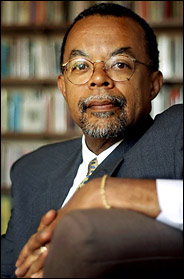Recently, Twitter user Aziah King posted a lengthy story via Tweets that took social media by storm. Chronicling a seemingly unbelievable weekend trip to Florida, King’s 148-Tweet epic is amazing not only for its content, but how she tells the story. Her voice—intensely personal, often hilarious, brazenly forthright—exhibits the Black discursive practice that Henry Louis Gates, Jr. notably theorized as “Signifyin’.” As John Wideman defined it in his 1988 review of Gates’s book, “Signifying is verbal play – serious play that serves as instruction, entertainment, mental exercise, preparation for interacting with friend and foe in the social arena. In black vernacular, Signifying is a sign that words cannot be trusted, that even the most literal utterance allows room for interpretation, that language is both carnival and minefield.” Rooted in the oral tradition, signifyin’ employs linguistic play and rich subtextual meaning as a strategy for self-expression, community building, and resistance to oppression.

Signifyin’ has proven an immensely influential concept in African American studies. In fact, Google Scholar reports nearly 3500 citations for Gates’s landmark, The Signifying Monkey: A Theory of Afro-American Literary Criticism. The concept has proven particularly popular among analysts of Black Twitter, including Andre Brock and Sarah Florini. One is left to wonder, though, “Does communication take place on Black Twitter that is not signifyin’?” While literary theory and other extant methods have value for new media scholarship, we must continue to explore online communities with methods designed specifically with the medium and even platform in mind.
As scholars such as Lisa Nakamura have shown, one reason that studying and understanding race online is important is because the Internet has often been understood as a postracial space. While some may argue the use of avatars and possibility for anonymity minimizes the relevance of race, Nakamura’s critique demonstrates the way race is implied and implicated in online identity construction. Black Twitter provides a rich space for research, and with the increasing relevance of the #BlackLivesMatter movement over the past two years, such research proves to be timely and necessary. But how do you study Black Twitter—or any online community—without essentializing or undermining the complexity and internal diversity of said group?

Clearly, a range of methods are essential. In my own work, I’ve been focusing on hashtags, which allow people to opt in (or out, if they don’t use them) to communities and conversations. Another method would be to focus around a particular event, using Twitter’s search function or online tools to identify common themes and opinions. Adapting a more literary approach, we might also study certain thought leaders on Twitter as “authors,” constructing personae via Tweets and Retweets. I’ll be exploring these approaches in the coming weeks and hope to report back about the affordances and pitfalls that come with them. In the mean time, I hope others will offer their opinions and insights to how we might continue the important work of studying online identities, communities, and movements.


